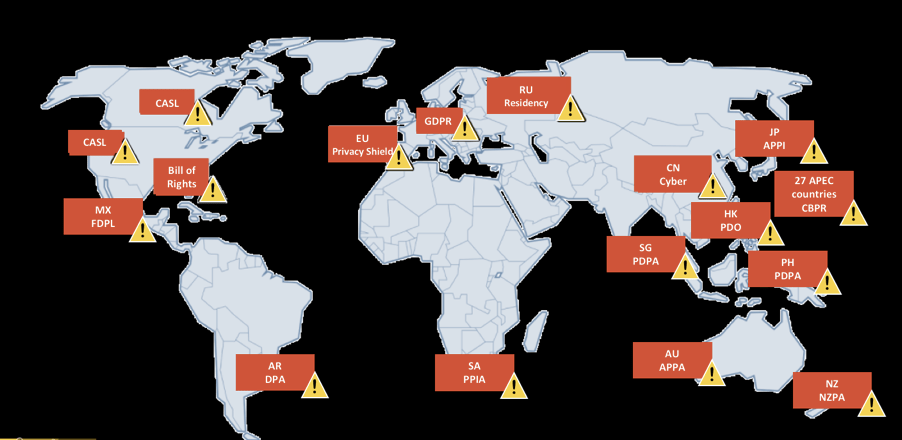If you own or manage a brand or organization today, you are in the business of customer experience. Digital disruption has changed almost everything that we knew and accepted as ‘normal’, from the way we consume information to how we purchase goods and services to how we engage with brands.
As a result, customer experience has become a requirement for any business to survive today. Gone are the days where you could survive solely on the product or service offered.
Yet, many organizations today still struggle in truly transforming the customer experience. One of the primary reasons for this is the inability to build a sustainable CX infrastructure. Sure, technology is an important factor in the whole notion of customer experience transformation, but for technology to be effective in doing so, we need to understand how technology is changing people.
In other words, we need to start with a customer experience mindset.
The importance of customer experience mindset
A customer experience mindset starts with having a clear understanding of what customers are really after – you need to be able to answer questions like who your customers are, what motivates them, what their preferences and interests are, and how they want to be perceived. Your answers to these questions create your foundation, on which you build your omnichannel strategy, which involves people, process, and technology.
Let’s look at some examples.
Uber and Airbnb were successful in disrupting the way people consume transportation services and buy accommodations. How did they manage to do that? For one, they were quick in identifying changing behaviors resulting from digital disruption and accepting those shifts as the new normal. They then realized that beyond the need for taxis and rooms, what their customers were really seeking was experience – one that’s unique and individualized.
We have become the experience generation, where we measure everything based on our experience with brands – this is the new normal in the age of customer experience.
Engaging with the experience generation
So, how can businesses engage, in a meaningful way, with the experience generation and where does digital transformation fit in this whole picture?
To answer that we need to first understand what digital transformation is really about. Digital transformation is about innovation, which means doing things differently. Every successful innovation starts by having the customer in the very center of it. If you haven’t managed to answer why you should care about customer experience, buying any technology will just mean getting higher efficiency of doing old things.
We have to be careful to not fall into the trap of turning customer experience into a commodity because when that happens, what we really do is take the customers out of the customer experience, and all our efforts are addressing the symptoms of the issue, not the issue. Customer experience starts with customer engagement, and customer engagement is built on trust.
Ask any successful entrepreneur what the key to that success is and they will tell you that it is trust – that you will deliver the good or service as promised, quality and all, and you don’t misuse their information, to say the least. Customers will come back to you when that trust is guarded and honored.
We conducted a research to survey 20,000 consumers around the globe (7,000 in Asia) last year to learn what consumers really look for from brands. One of the most important insights we learned was the number one reason that causes consumers to break up with brands: when brands use their information without knowledge (78% on average for Asian consumers).
Trust is the real currency in today’s digital economy.
How do you guard customer trust in today’s digital economy?
By now you might have heard about the European Union’s (EU) General Data Protection Regulation (GDPR), which in principal is a reinforcement of customer privacy law in response to the above phenomenon.
Under GDPR, if you collect and process personal data of individuals who are in the EU, you’ll need to enable consumers to manage and control the personal data you collect from them by May 25 May 2018 or face stiff penalties of 20 million Euros or up to 4% of your global annual revenue – whichever is greater. No wonder GDPR gets so much attention.
But did you know that customer privacy regulations are actually everywhere (see figure below)? This has become an increasing challenge for businesses that will continue to stay – in fact, it might become a show-stopper in your overall customer engagement efforts if it’s not addressed.

Organizations need to have a customer identity management strategy as part of the overall customer experience transformation initiative.
Having a complete customer identity management strategy enables the ability to gain intelligent insights by collecting key information around your customers progressively, while building your relationship with consumers throughout the different stages of the customer journey. It also helps you manage consent according to the different privacy regulations across the globe and hence, ensure compliance. Consent management is critical because it gives you the access to continue your engagement with your customers. As a result, you now have a well-rounded profile for each of your customers that enables you to offer relevant product, service, or promotion.
It pays to always start with a customer experience mindset, because this will mean responding to regulation like GDPR will be part of the big picture, which is an end-to-end omnichannel strategy. At the end of the day, a great customer experience is about giving what your customers really want. When you are able to do this, you are off to a great start in your customer experience transformation journey.

